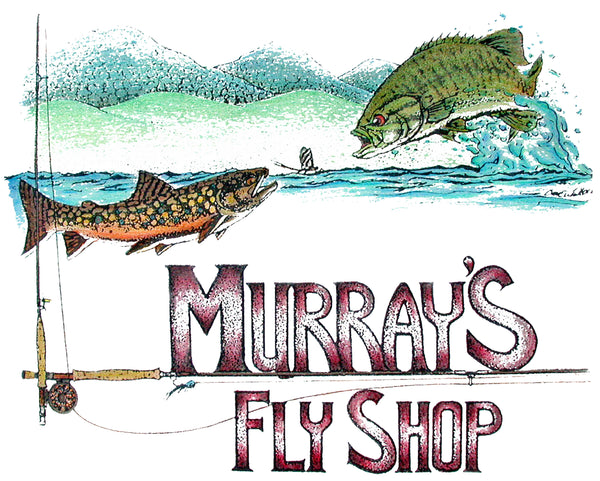The Wonderful Mr. Rapidan Fly Family
THE WONDERFUL MR. RAPIDAN FLY FAMILY
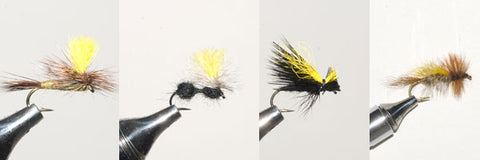
The Wonderful Mr. Rapidan Fly Family. The Mr. Rapidan family of flies began in the early 1970’s at Murray’s Fly Shop in Edinburg, VA when two gentlemen in my advanced fly fishing class at Lord Fairfax Community College came to me with a simple request. They asked me if I could teach them to tie a dry fly that would float very well in the choppy mountain streams, that would mimic the major aquatic insects which hatch during the first several months of the season and that would be easy for them to see on the stream. I thought this was a great idea so I started experimenting.
Mr. Rapidan Dry Fly
To help the fly to float I choosestraight moose body hair for the tail which is slightly hollow. Fine diameter poly dubbing was just coming on the market so I used this for the body. Mrs. Pat Barnes was a wonderful fly tier and had a great fly shop with her husband in West Yellowstone, Montana. Several years previously she had suggested that I use yellow calf tail wings to improve the visibility of my flies in highly shaded streams. This was the perfect choice for the wings of my new fly. I choose grizzly and brown for the hackle because this had proved itself on many great flies.
At the time I was working with Art Flick in identifying the aquatic insect hatches in the Blue Ridge Mountains for the book I was writing, Trout Fishing in the Shenandoah National Park, at the request of the Park officials. Realizing that the Epeorus pleuralis (Quill Gordon) and the Stenonemia vicarium (March Brown) were the first two major hatches on our mountain streams I wanted a fly body color that would show the trout the body color of these two insects. At the time I had to blend my own poly dubbing to get the color I wanted, but later the Fly Rite Company put this on the market as Quill Gordon Fly Rite dubbing.
 Mr. Rapidan Parachute Dry Fly
Mr. Rapidan Parachute Dry Fly
We tied this in my class and it became an instant success. The next year we tied the Mr. Rapidan Parachute Dry Fly and I added both of these to my line of trout flies in my fly shop.
Since the Eperous pleuralis mayfly emerges up through the stream with their wings out I felt it was important to add a Mr. Rapidan Emerger to the series. Fishing these with a rising motion like the Leisenring Lift is very effective.
Naturally, when bead head nymphs became popular in the fly fishing world, I added the Mr. Rapidan Bead Head Nymph to the line. All of these first four proved themselves well in sizes 12 to 16 on freestone streams.
A very pleasant surprise came one snowy late September day on the Yellowstone River. The heavy overcast produced a great beatis mayfly hatch. I had tied some Mr. Rapidan Parachute dry flies in sizes 18 and 20 so I tried them. Both the browns and the rainbows took them readily and today these are standard for me in all of my fly fishing when a baetis hatch is expected.
 Mr. Rapidan Ant
Mr. Rapidan Ant
About 10 years ago my son came to me after a late summer guide trip in the Blue Ridge Mountains and exclaimed, “Dad, my clients did well with size 18 and 20 dry Black Ants but they had trouble seeing these on the stream. Let us tie up some Black Ants and use a yellow post parachute wing. Thus the Mr. Rapidan Ant was born and it is the top selling ant in my fly shop in sizes 14, 16, and 18.
Chironomid midge hatches are frequently very heavy on many trout streams and these bring up some very large trout. When these occur on sections of the streams where there is a moderate current the trout will hold on specific feeding stations and take the naturals as the current delivers them. Many of these natural midges are quite small and it is necessary to use size 20 or size 22 flies to fool them. Naturally, these small patterns can be difficult for you to see so by adding a yellow post wing to our Mr. Rapidan Midge we have improved the fly visibility.
Even more difficult to catch are those trout feeding on midges in sloughs and large back eddies where there is little or no current because these trout feed by cruising. Here the Mr. Rapidan Midge is invaluable because you can cast it out in the cruising path of the trout and watch it closely for the trout’s strike.
Many fine trout streams have wonderful caddisfly hatches and the trout feed very heavily upon them. Unfortunately many of these hatches occur very late in the evening when it is difficult to see our fly on the water. I felt this was a great situation in which to expand the Mr. Rapidan series.
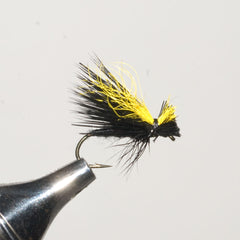 Mr. Rapidan Delta Wing Caddis, Black
Mr. Rapidan Delta Wing Caddis, Black
By experimenting with various ways to mimic the natural tent-like wing configuration and to produce the realistic light pattern on the stream I came up with the Mr. Rapidan Delta Wing Dry Caddis. I now tie this in three different colors in sizes 14 and 16. The black, olive, and tan patterns meet all of my caddisfly needs and the yellow top-wings help me see them on the stream.
 Mr. Rapidan Skater Dry Fly
Mr. Rapidan Skater Dry Fly
Mr. Rapidan Skater
The wonderful Hexagenia mayfly hatches on the smallmouth rivers prompted me to tie a Mr. Rapidan Dry Skater in size 8 to meet this need which it does exceptionally well. If you wonder how much the smallmouths’ feed on this hatch you should have been with me the evening I counted 17 separate bass coming up to the naturals in one minute. I put on the Mr. Rapidan Skater and took one nice bass after another.
Actually, on our smallmouth bass guided float trips the Mr. Rapidan Skater has become our number one dry fly.
Little did I realize when those two gentlemen came to me in my college fly fishing class 30 years ago that their simple request would evolve into the many great flies we now have in the Mr. Rapidan series. However, I am glad they did.

Mr. Rapidan Standard Dry Fly
Hook: Mustad 94840 in sizes 12, 14, and 16
Thread: 6/0 Tan Prewaxed Nylon
Body: Quill Gordon Fly Rite
Wing: Yellow calf tail
Tail: Straight Moose Body Hair
Hackle: Brown and Grizzly Dry Rooster Hackle
Coat hook shank with thread and tie in about eight moose body hair fibers for the tail, which is equal to the length of the hook shank. Tie in a clump of calf tail for the wings after removing the short hair fibers. Split the wings to each side and apply a small drop of cement at the wings base. Wax the tying thread and apply the Fly Rite dubbing to the thread. Wind and taper the body neatly to one eighth of an inch behind the wing. Tie the grizzly and brown hackle feathers behind the wing with the dull side up. Wind each hackle feather forward separately placing the majority of the wraps behind the wings. Tie off the hackles in front of the wing, trim hackle off, whip finish and apply cement to the head.
-
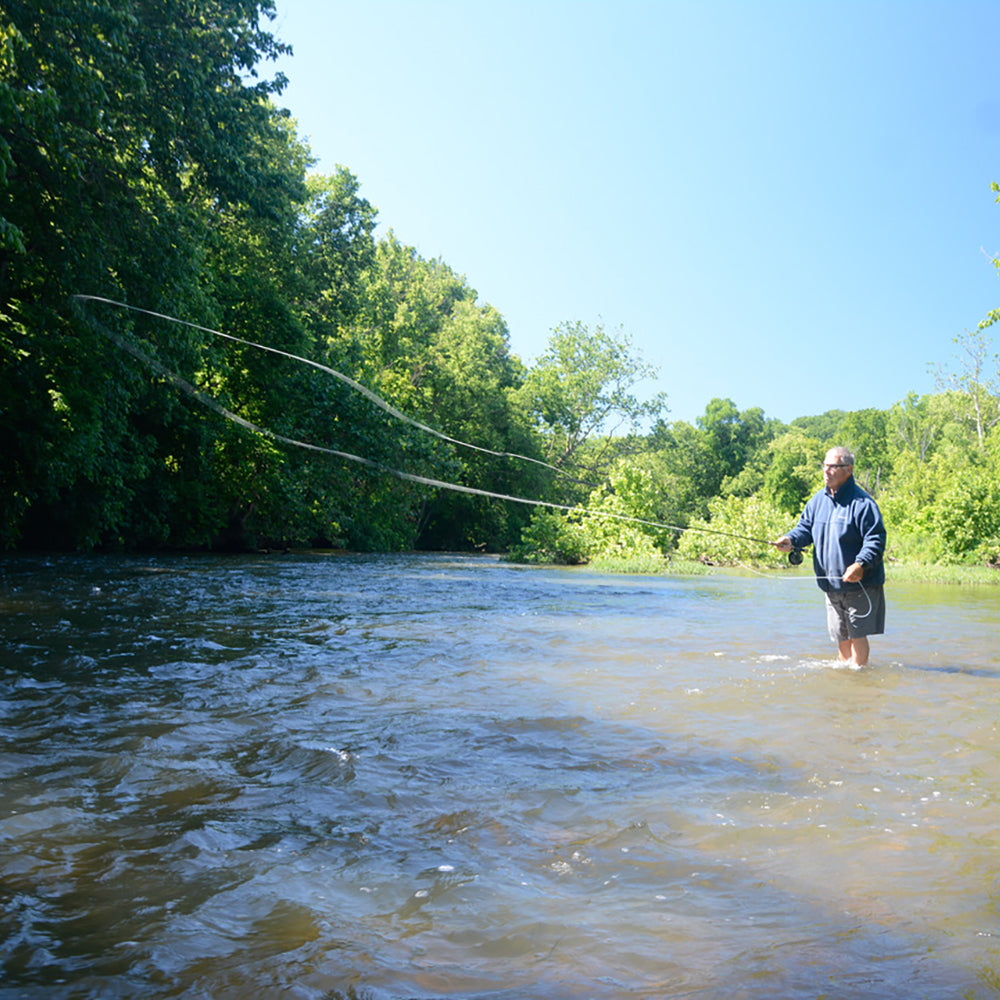
Schools, Classes, Workshops
Dive into the world of fly fishing with our comprehensive range of...
-
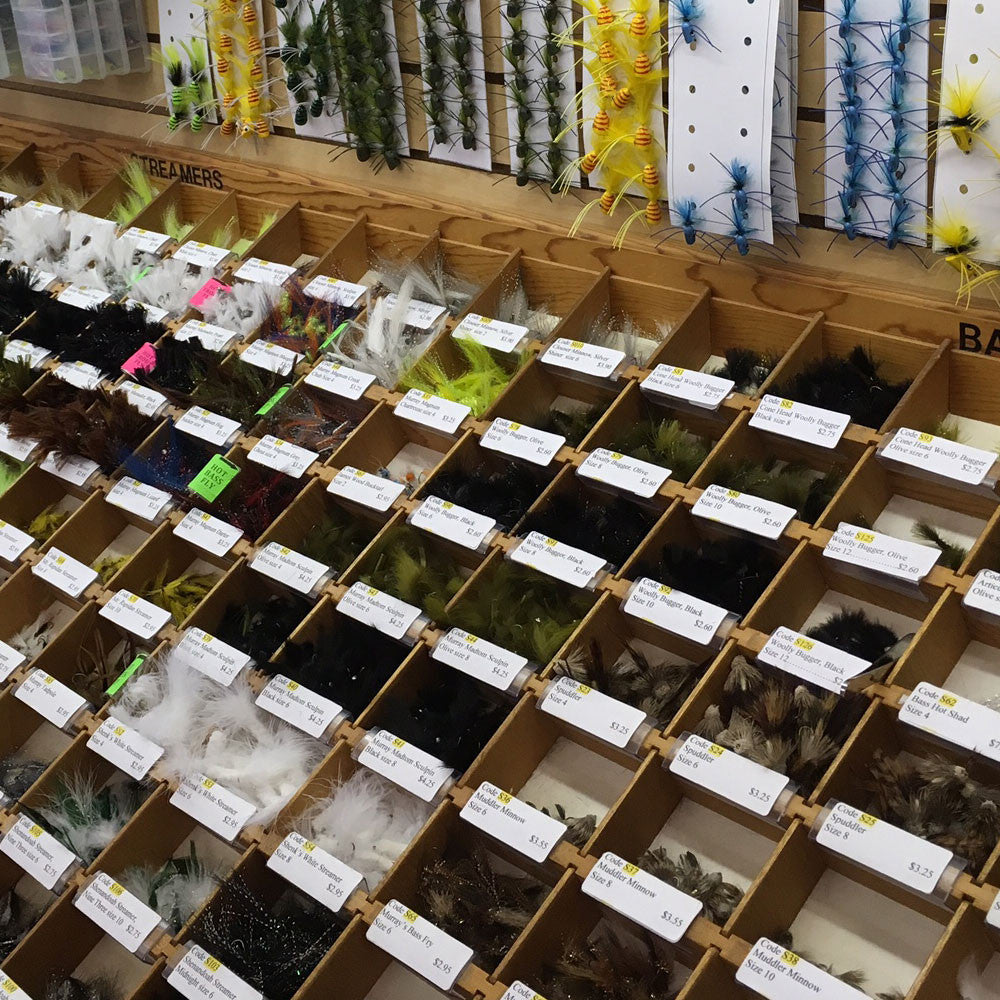
Featured Flies of the Month
Harry Murray's recommended fly list for this time of the year. (April...
-
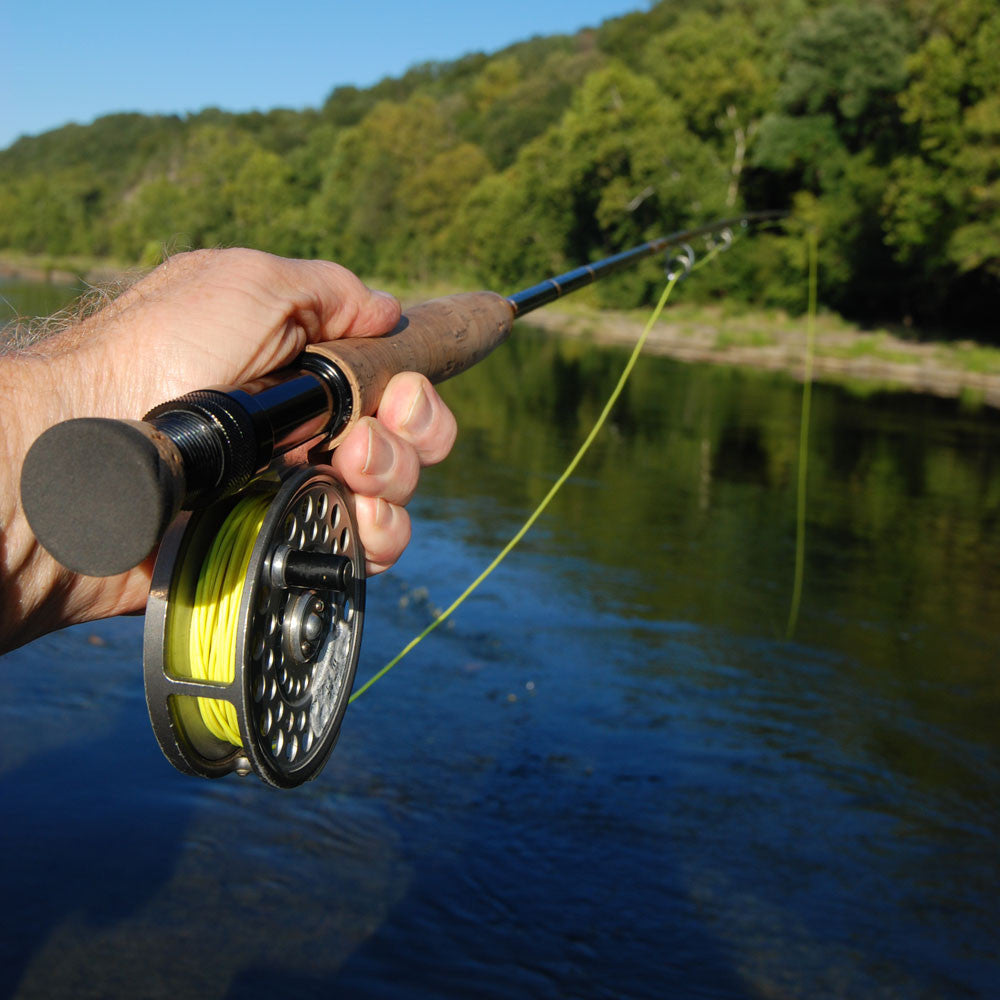
Fly Fishing Rod Outfits
Fly Fishing Rod and Reel Outfits for Smallmouth Bass fly fishing, Trout...
